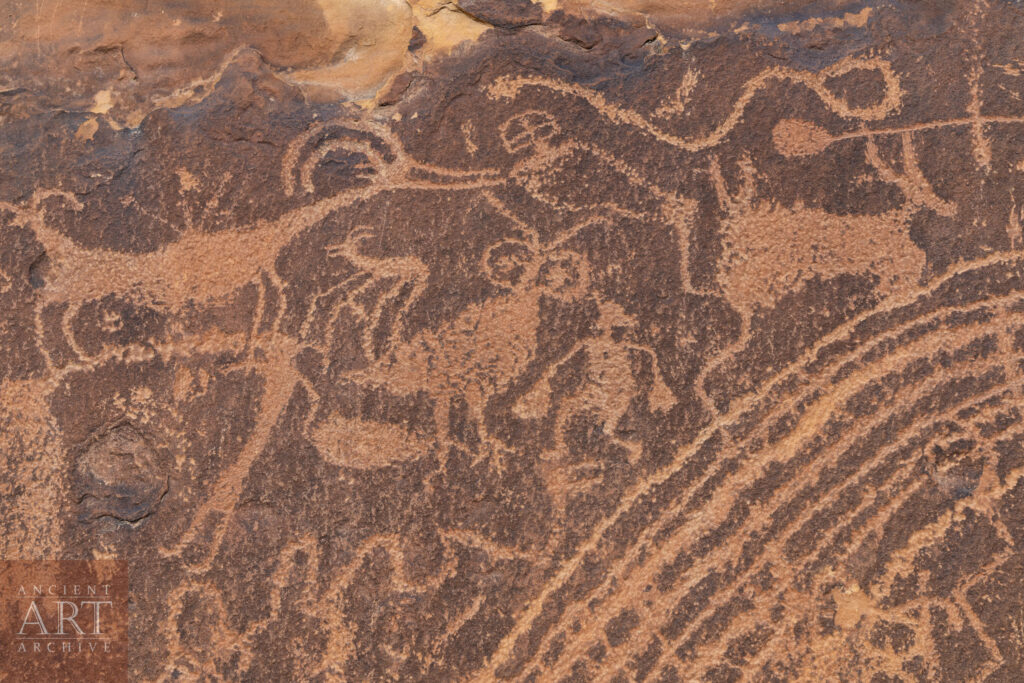
The Rochester Creek rock art site offers a complex array of intricately caved images. The site is located on a promontory overlooking the confluence of two canyons in Emery County Utah. There are images from Ute, Fremont and Barrier Canyon cultures represented on the panel.
More of our work including a curated site visit is here.
Before visiting also check out the Bureau of Land Management’s Rochester page here.








